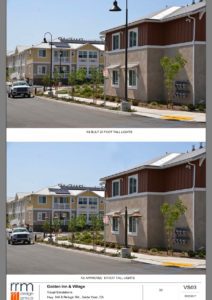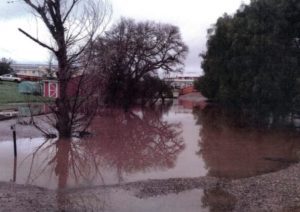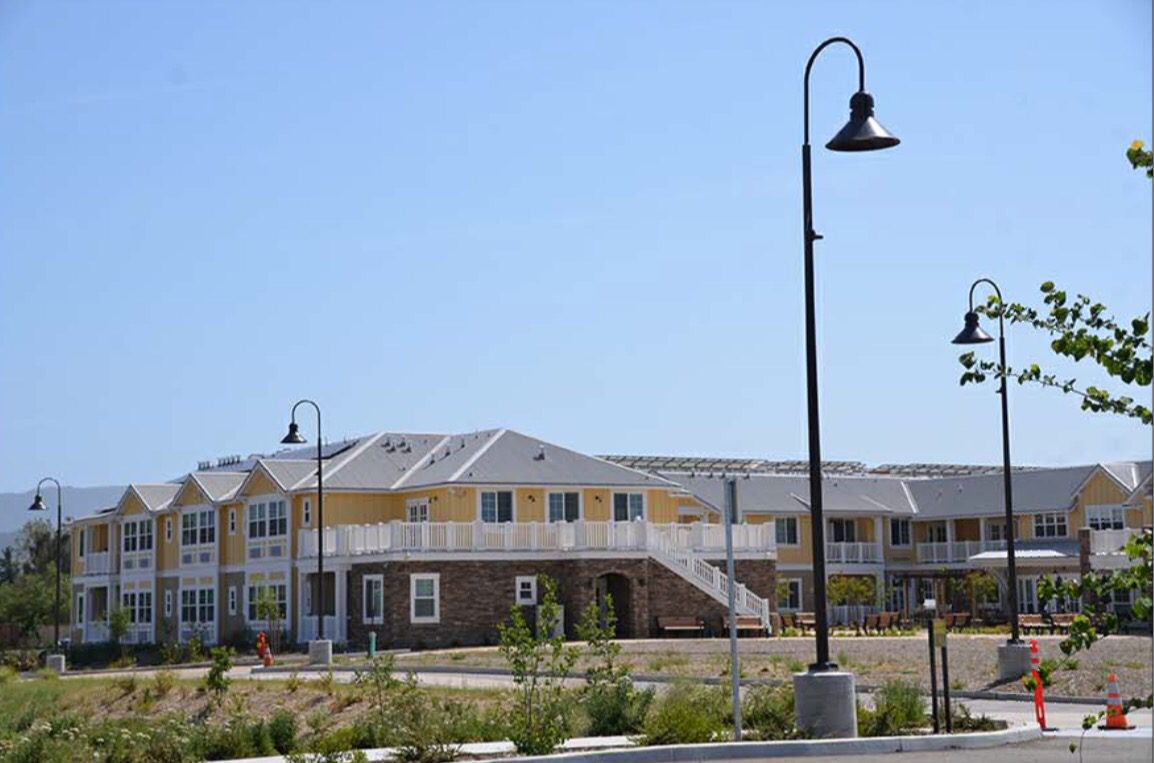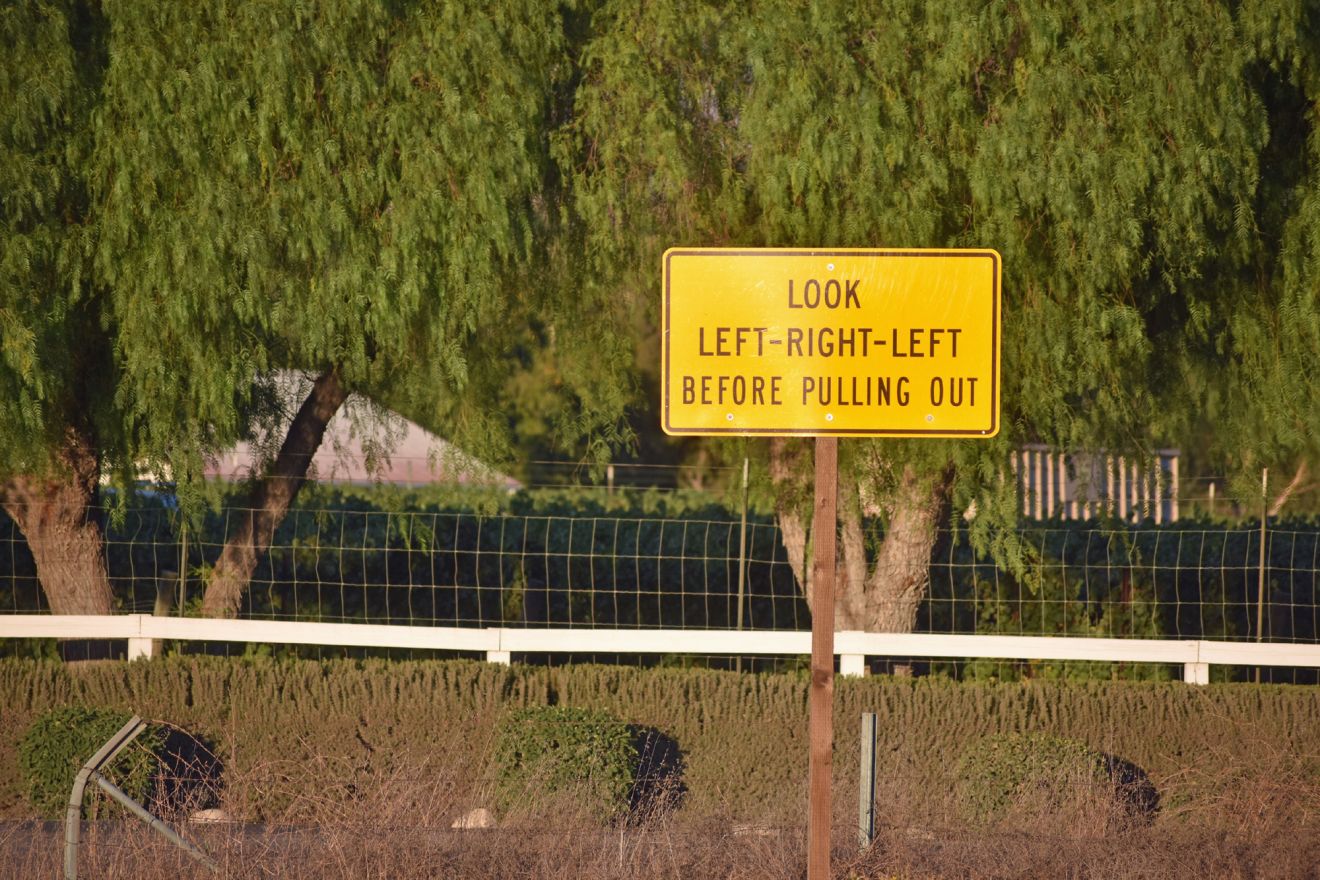Neighbors object to Golden Inn lights, runoff
By Raiza Giorgi
When neighbors on Lucky Lane in Santa Ynez were first notified of plans for the Golden Inn and Villages project in 2012, they were very much in favor of the construction next door because of the need for affordable senior housing and care facilities.
Now, however, the intensity of nighttime lighting and the extent of stormwater runoff onto their properties have changed their opinions.
“I was there for the early meetings and I agree the purpose of the facility serves a need in our community,” said Mark Brooks, a general contractor who lives on Lucky Lane just south of the new senior community, which opened in the fall of 2016 at Highway 246 and Refugio Road.
Brooks and his neighbors say they agreed with what was planned, but not with what was built. They believe that Santa Barbara County allowed construction that did not comply with the project’s conditions of approval.
They will be attending a public hearing for plan revisions to the project at 9 a.m. Wednesday, Aug. 30, in Room 17 of the county Engineering Building at 123 E. Anapamu St. in Santa Barbara.
Lisa Plowman of RRM Design Group, the agent for Golden Inn and Villages, was not available for comment.
Brooks and the other neighbors who petitioned the county believe that the Golden Inn project not only degrades their quality of life but also that it would set a bad precedent for other projects to evade the rules.
“Instead of fixing the problem, the developers are requesting an amendment to include all of the errors into their project. Basically they are asking for forgiveness rather than asking permission. If the planning commission accepts this, this just sets a precedent to every other future project that they don’t have to follow the plans that were approved,” Brooks said.
The neighbors on the south side of the Golden Inn and Village are not the only ones objecting. The project has also received a Notice of Violation from the state’s Central Coast Regional Water Quality Control Board regarding stormwater management and post-construction requirements.
The Rona Barrett Foundation established The Golden Inn and Village as an affordable independent-living community for underserved senior citizens. The complex near Santa Ynez Valley Union High School features 60 independent living units for low-income seniors alongside 27 affordable rental apartments for employees and families, a senior community center, small shops and services, and a professional kitchen.
In 2018, it plans to open Harry’s House, a home for Alzheimer’s patients and assisted living.
The problems cited by Brooks and his neighbors are the height and intensity of the outdoor lights; improperly constructed drainage that allows stormwater to flood their properties; and the size of the buildings, which they say are bigger than what was permitted.

Photos contributed
For example, the approved plans called for 44 light poles in the parking areas from 8-14 feet tall. Instead, the project has 25 pole lights that are 20 feet high, and the developer wants approval for that variation.
“I live directly behind Mark (Brooks), and the lights from the Village flood directly into my front living room and it looks like a strip mall,” said Patti Stewart.
“I worked for the county and retired to take care of my father with Alzheimer’s, and I am very much in favor of the Village, I donated to their project, but it is impacting my home in a negative way. This is not the rural area it once was with dark skies,” she added.
According to the Planning and Development Department, staff members were “unaware of the changes made by the applicant to the approved plans. As a result, the 20-foot-tall lights were approved by P&D in conflict with the project’s conditions of approval and were subsequently installed on the site.”
“I call foul on this, because this was one of the conditions of approval by the Board of Supervisors. There were many eyes on this project and surely someone noticed that the lights did not match the approved plans,” Brooks said.
Brooks has taken time off from his construction business for the last year to dedicate the necessary time to do research and attend all the project’s public hearings, and he believes that his experience and expertise in construction allows him to understand the process very clearly.
According to the staff report for the Aug. 30 hearing, the 20-foot-tall lights were installed as a result of additional analysis completed by the applicant’s lighting engineer, who determined that the 8-foot-tall lights would not provide enough lighting to meet parking-lot standards set by the Illuminating Engineering Society of North America (IESNA).
The county’s Deputy Planner Jeff Wilson said that IESNA provides expert advice, but its standards are not a part county code. To change plans, the developer had two options — replace the 8-foot lighting or apply for an amendment. The developer, RRM Design Group, applied for the amendment.
“It is important that the lighting engineers and government agencies remember that the Santa Ynez Valley is a rural area, not a brightly lit city like Santa Maria. … I think three high-intensity streetlights with no glass lens in less than a half block is over-lighting for this neighborhood,” wrote Nancy Emerson, chairwoman of the Save Our Stars committee of WE Watch, which also opposes the current lights.
Emerson’s recommendation is to remove two of those three streetlights and turn off the lighting on the children’s play structure, because children won’t be using the equipment at night.

Photo contributed
Regarding the drainage problems, Brooks said the neighborhood had issues with water before the Golden Inn was built, but nothing like what happened when the most recent rain storms created giant ponds of water in his and several of his neighbors’ yards and made their street impassable.
“Before the YMCA was built across the highway, there was a house and a field (on that site) that when it rained had a drainage basin where water collected and slowly discharged into the ground or flowed into the creek,” Brooks said.
“After the YMCA was built, that runoff went across the highway to the farm field where the Village is now, and we wanted to make sure when it was built it (the runoff) didn’t get pushed to our properties,” he added.
After the rainstorms earlier this year, Brooks said, his property and several of his neighbors properties flooded. One of his neighbors’ pasture was under several feet of water — their kids swam in the pasture, he said.
The violation notice from the State Water Board stated that “bio-retention” areas specified in the construction plans weren’t built and that project engineers did not properly use the county’s sizing tools to develop their stormwater control plans (SWCP). That led to improper sizing of the two retention basins on the site, which weren’t designed to the proper size. Basin 1 is shown on the construction plan with 7,570 square feet of surface area, but the SWCP requires 9,000 square feet. Basin 2 is drawn on the construction plan at 2,700 square feet rather than the required 3,800 needed.
Staff from the county and Regional Water Quality Control Board conducted an onsite inspection on April 25 and identified the missing stormwater control measures. During the inspection, county staff members said they rely on an “Engineer’s Certification of Approval” to verify accordance with the post-construction requirements.
However, while county code allows third-party verification, it does not allow for self-certification. The “Engineer’s Certification of Approval” that was submitted to the county was prepared by the same engineering company that prepared the stormwater control plans and designed the control measures to comply with the post-construction requirements.
The Regional Water Quality Control Board considers that self-certification, not third-party.
The Water Board issued the notice of violation on June 1 and gave the county until Aug. 30 to turn in technical reports.
“If the technical report is not submitted by the current deadline, the Central Coast Regional Water Quality Control Board will evaluate next steps and consequences of violations,” according to Andrew DiLuccia of the Water Board.
Consequences include the possibility of fines up to $10,000 per day for each violation. The situation can also be referred to the state Attorney General, and then a court could impose a civil liability of up to $25,000 per day for each violation.
Wilson, the county planning staff member, said he didn’t have the authority to speak to the drainage system. Emails and calls to the county Flood Control staff weren’t returned before publishing.
The issue of the Golden Inn’s square footage also came into question when Brooks was researching the construction. He found that the original 91,065 square feet proposed on the 7.34-acre parcel had been revised and approved for 107,500 square feet.
“I understand because it is a low-income housing facility they are entitled to a density bonus, but the valley community still thinks it’s owned by Rona Barrett, which most of it isn’t — and when the last of the three parcels are sold, it won’t be at all,” Brooks said.
Parcel 2 and 3 are now owned by the Housing Authority of the County of Santa Barbara, and Parcel 1 is in the process of being sold to an unnamed organization, according to staff documents.
The amendment proposed for the Planning Commission hearing asks for the square footage to be increased to 134,540, which includes the buildings already built and proposed to be built.
Brooks argues that the amendments fail to meet the Substantial Conformity rule, which allows an additional 1,000 square feet or a maximum of 10 percent of the total project, whichever is less. The developer is asking for much more than either of those stipulations, he noted.
To read the entire staff report, log onto http://sbcountyplanning.org/PDF/boards/CntyPC/08-30-2017/17RVP-00000-00046/Staff%20Report.pdf.






